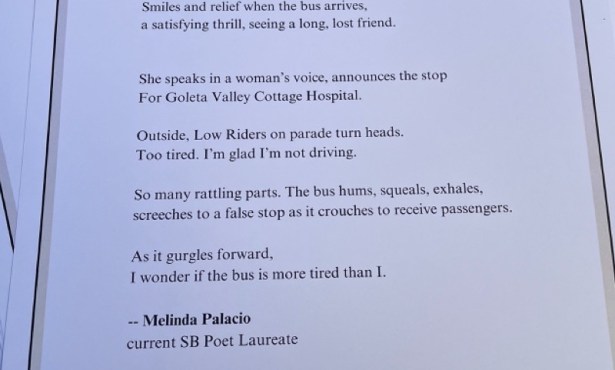Way Out of Tajiguas
I am writing in response to the June 21 Independent article by Nick Welsh titled “Tajiguas Landfill Techno.”
For the County to state that “The most promising technologies happen to be the most untested and politically controversial,” and then abandon these conversion technology options, leaves a lot of questions unanswered. Especially in light of the fact that they voted for anaerobic digestion (a real dinosaur) and a company to manage Tajiguas solid waste – Mustang Renewable Power Ventures, LLC – that is based in Newport Beach, formed an LLC only two years ago, and, according to the information on the Internet, “has no known officers.”
Current Environmental Landscape: Some members of the community hold the view that current solid waste and wastewater programs and policies for Santa Barbara County are not particularly environmental or sustainable. It is encouraging that the Santa Barbara City Council is “Taking a long hard look at all [their] trash-hauling and recycling options” (for Tajiguas). However, it might be more productive instead to develop a “Sustainable Plan for the Management of Energy and Water” (for Santa Barbara County).
Currently, Tajiguas landfill receives 170,000 tons yearly of solid waste. Charging $75 ton for tipping fees amounts to millions of dollars a year in budget revenue. The “Resource Recovery Enhancement Project at Tajiguas Landfill” proposed by the County will expand the landfill, increase the amount of solid waste trucked there every year, and eliminate future waste-to-energy options; is pollution is viewed as a fairly lucrative source of revenue?
County of Santa Barbara Environmental Design and Tajiguas Landfill: If the County’s plans for the environment are driven by revenue-collecting and the need to fund city and county budgets, maybe this type of planning is not what is best for the community. Again, it’s encouraging that City Council is “taking a hard look at all [their] options,” but, in addition, I propose that the community could design what is best for the community.
As an option to a County or City plan for Tajiguas, maybe the students of the UCSB’s Bren School could design a student project which would research, collect data, and develop a “Sustainable Design for the Management of Renewable Energy” for Santa Barbara County, based on information of what type of sustainable management of solid waste and water resources other communities are implementing (in Europe for example).
European Landscape: Contrary to the assertion that “the most promising technologies happen to be the most untested,” in Sweden and China, Westinghouse designed, built, and installed waste-to-energy systems 10 years ago that are successfully converting trash into energy. In addition, city sewer plants in Sweden produce net profits each month by converting sewage into fuel and electricity, using almost 100% recycled water and producing almost zero pollution. And, in some cases, they have been doing it for almost 15 years. Why has the County of Santa Barbara eliminated any of these possibilities for another 20 years? For example, see the Georgia Strait Alliance article “Caring for Our Coastal Redwoods.”
Community of Santa Barbara Environmental Design: I urge us to think in new ways, and rather than simply try to “solve our chronic landfill problem,” see this as an opportunity to “develop a ‘Sustainable Plan for the Management of Energy and Water’” and improve our future. We should take it as encouragement to develop our own successful waste-to energy (pyrolysis or gasification) conversion facility to convert solid waste to syngas and/or electricity; and a manageable composting and recycling program. For example, rather than haul their trash to Tajiguas, the communities of Los Olivos, Buellton, Solvang, and Santa Ynez could install their own waste-to-energy facilities and generate on-site syngas and/or electricity. They could also employ local composting and materials recycling facilities. Such facilities and programs would greatly benefit these communities, create local employment, and reduce or eliminate the current and future volume of waste trucked to and processed on the Gaviota coast.



